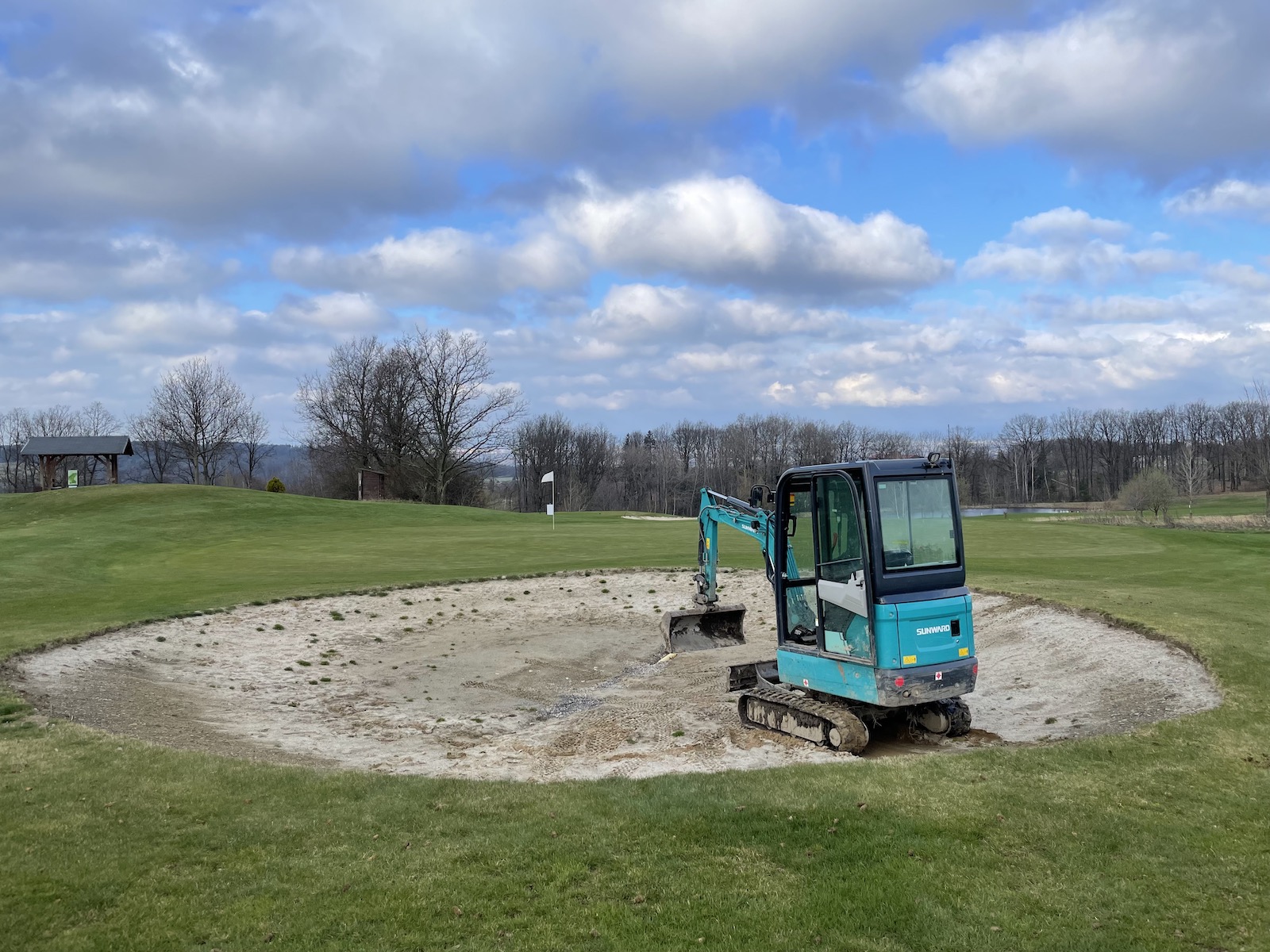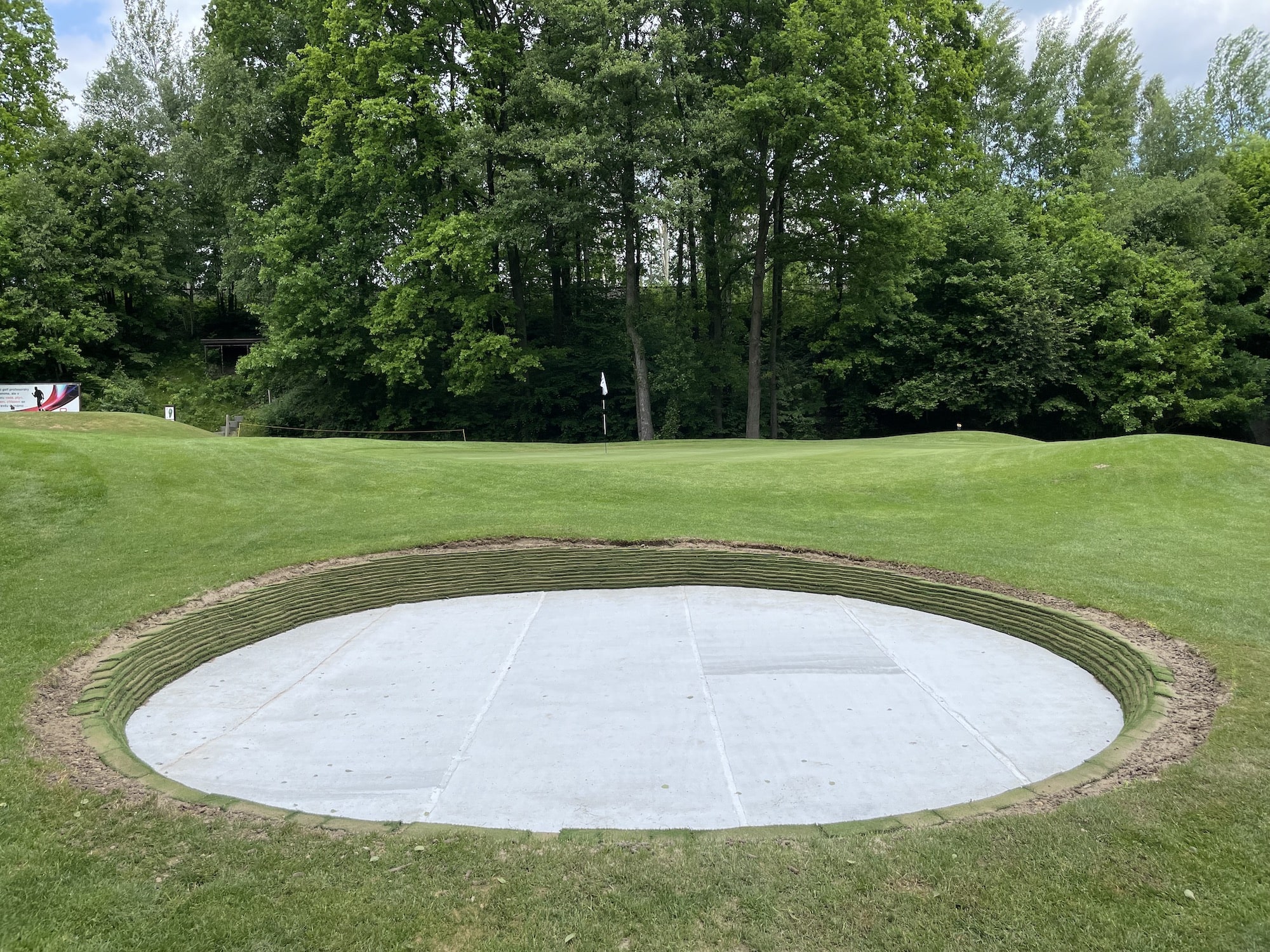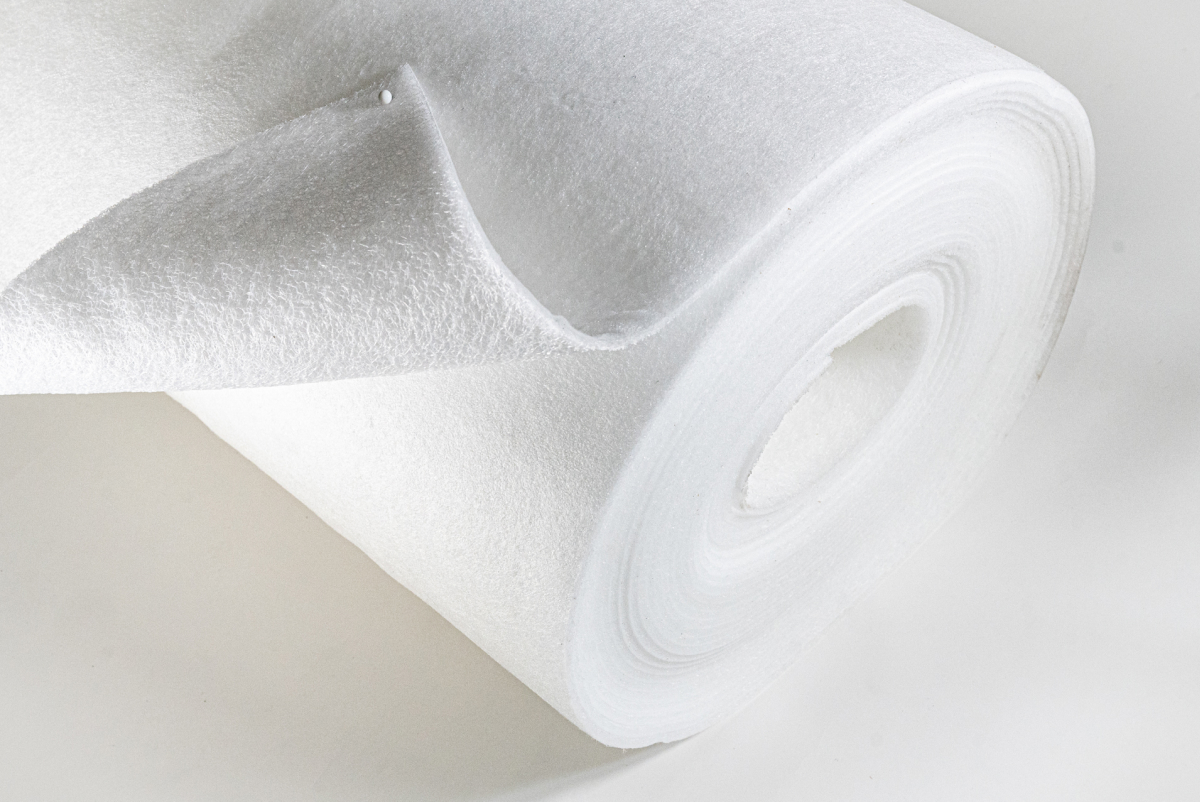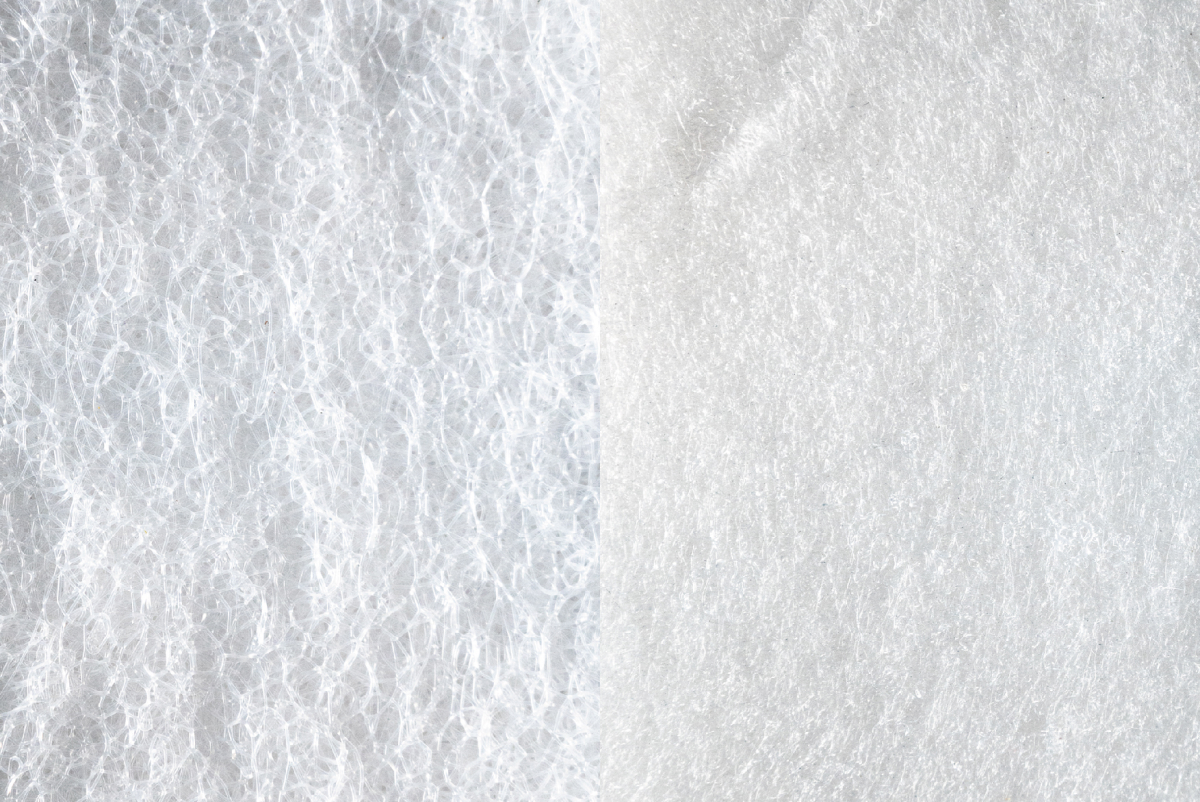What material is used for bunker liners?
Choosing the right material for bunker liners in golf courses is crucial for performance, durability, and cost efficiency. Explore the properties, benefits, and considerations of options like polyethylene, fabric, and concrete, as well as other alternatives, to make informed decisions.

1. Polyethylene: An innovative solution
Polyethylene, or PE, is one of the most used materials for bunker liners. It is a versatile and durable material. With its exceptional properties, polyethylene offers several benefits that make it a popular choice for bunker liners.
Properties
Polyethylene, an innovative type of plastic known for its toughness, flexibility, and chemical resistance, is composed of ethylene monomers, either straight or branched, resulting in various types of PE with unique properties.
Widely used across numerous industries, this material stands out for its strength, longevity, and cost-effectiveness.
Benefits of polyethylene as a bunker liner material
Sand containment and bunker shape preservation:
The primary function of a bunker liner is to retain the sand and prevent erosion. Polyethylene effectively forms a strong barrier that holds the sand in place, even during heavy rain. PE is flexible and easy to shape, so it fits perfectly. This keeps the bunker in good shape and makes the game better for golfers.
Longevity and low maintenance requirements:
Polyethylene bunker liners are highly durable and have a long service life. They exhibit excellent resistance to wear and tear, ensuring their ability to withstand the demands of golf course maintenance. PE liners require minimal maintenance, reducing the need for frequent repairs or replacements, thereby saving time and resources.
Chemical resistance:
PE demonstrates excellent resistance to chemicals commonly found in golf course environments, such as fertilizers, pesticides, and water treatments. This helps keep the liner strong and working well for a long time.
Conclusion
Polyethylene is a highly commendable innovative choice for bunker mats due to its exceptional qualities. Not only does it exhibit remarkable resistance against chemicals and sand, but it also boasts low purchase and maintenance costs, ease of installation, and an eco-friendly nature. Consequently, golf course managers frequently opt for polyethylene liners as they provide golfers with consistent playing surfaces while simplifying bunker maintenance tasks.

2. Geotextile fabrics: A versatile choice
Geotextile fabrics have gained popularity as a material for bunker lining in various construction and landscaping projects. These fabrics are designed to offer several advantages, which makes them a common choice for many applications.
Properties
Geotextile fabrics are made of synthetic materials like polyester or polypropylene. They are used in construction and engineering projects to stabilize the soil, control erosion, filter water, and separate different kinds of materials.
Non-woven geotextiles are suitable for bunker liners because they let water through while still holding back small particles. They come in different thicknesses and strengths.
Benefits of geotextile fabrics as a bunker liner material
Permeability and drainage capabilities:
Geotextile fabrics offer the advantage of permeability, enabling efficient drainage and reducing the risk of structural damage by preventing water accumulation in bunkers. Their ability to maintain permeability under high loads makes them suitable for heavy-duty applications.
Erosion prevention and sand retention:
Geotextile fabrics effectively prevent erosion and retain sand when used as bunker liners for golf courses. They act as a protective barrier, stabilizing the soil erosion while allowing proper drainage, making them advantageous in areas prone heavy rainfall.
Cost-effectiveness and ease of installation:
Geotextile fabrics offer the advantages of cost-effectiveness and easy installation. They are relatively inexpensive compared to materials like concrete, making them a cost-effective option for bunker liners. Additionally, their lightweight nature simplifies the installation process, reducing labor and equipment needs.
Conclusion
Geotextile fabrics have become a popular choice for bunker liners in construction and landscaping projects due to their versatile properties and several benefits. Similar to polyethylene, they offer permeability, erosion prevention, sand retention, cost-effectiveness, and ease of installation. With their wide range of applications and advantageous features, geotextile fabrics provide a reliable solution for bunker lining needs in various environments.
3. Concrete: A durable but costly option
Concrete can be a durable option for bunker lining, offering strength and resistance to erosion. However, it can be expensive, time-consuming to install, and lacks flexibility for modifications.
Properties
Concrete bunker liners are known for their durability,
structural stability, customizability, resistance to
environmental factors, and low maintenance requirements.
However, they may have limitations in terms of permeability and
adaptability.
Benefits of concrete as a bunker liner material
Enhanced structural integrity:
Concrete bunker liners contribute to the overall structural integrity of the bunker. The solid and rigid nature of concrete reinforces the stability, providing a stable and secure environment. This added strength reduces the risk of collapse or shifting, making concrete liners a preferred choice in situations where structural stability is crucial, such as for underground bunkers.
Remarkable longevity:
Concrete bunker liners are highly durable and can last for a very long time with proper installation and maintenance. Their ability to withstand environmental factors ensures long-lasting protection, reducing the need for frequent replacements for golf courses.
Enhanced security and permanence:
Concrete bunker liners offer enhanced security and permanence compared to polyethylene and fabric liners. Concrete is a solid and impenetrable material, making it difficult for unauthorized access or intrusion. Additionally, once installed, concrete bunker liners are less susceptible to wear and tear, vandalism, or unauthorized modifications, ensuring long-term security and protection.
Conclusion
Concrete may not be the best choice for golf course owners prioritizing factors such as purchase price, despite its undeniable strengths such as durability, impermeability, and waterproofing capabilities. The high cost and requirement for specialized equipment and skilled labor during installation make it an impractical option for those seeking alternative solutions that offer reliable, long-lasting protection for their assets and critical resources.
Other Materials: Alternatives and considerations
When searching for alternatives to commonly used materials like polyethylene, fabric, and concrete, it's important to consider options such as Ethylene Propylene Diene Monomer (EPDM) and Polyvinyl Chloride (PVC).
EPDM is a synthetic rubber known for its resistance to weathering, and chemicals, making it suitable for roofing and sealing purposes. PVC, on the other hand, is a versatile material with excellent durability and weather resistance, widely used across industries.
However, it's crucial to be mindful of potential environmental concerns associated with both EPDM and PVC, such as the non-biodegradable nature of PVC and the release of toxic additives during manufacturing and disposal. Therefore, it's essential to carefully weigh the pros and cons of EPDM and PVC while exploring other sustainable alternatives that maximize environmental friendliness .
What are the key factors in choosing bunker liner materials?
Key factors to consider when choosing a bunker liner material include:
- Sand containment and bunker shape preservation
- Longevity and low maintenance requirements
- Chemical resistance
- Cost-effectiveness
- Ease of installation
- Environmental impact
Key takeaways
Different materials can be used for golf course bunker liners. The most common include polyethylene and fabric, while concrete can also be used.
Polyethylene and geotextile fabrics are popular for their sand containment, durability, low maintenance, and cost-effectiveness. Concrete is extermely durable but expensive and inflexible. Key factors when selecting bunker liners include sand containment, longevity, low maintenance, chemical resistance, cost-effectiveness, ease of installation, and environmental impact.
Our recommendation
At GolfDren, we generally recommend polyethylene lining, tested and proven for flexibility, durability, and cost-effectiveness.
In many ways, the best choice will be our new invention Duotop – combination of PE and geotextile. It is a two-layer bunker liner consisting of a drainage core and a filter geotextile. This composite lining is the very best in its own way, because it prevents even the smallest dirt from getting into the sand. Compared to other products, it offers better mechanical resistance, ductility and separation.

